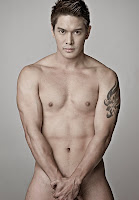Ricardo Dominguez, associate professor at the University of
California-San Diego, is asking students to pose naked for a final exam
as a “nude/naked gesture,” one of a number of gestures that take place
in his class “Performing for Self.”
Reportedly, the gesture takes place in a dark room lit by candlelight.
In an e-mailed statement, Dominguez says students were “aware from
the start of the class that (the gestures are) a requirement.” He says
that he has taught the class for 11 years without complaint.
“It was clearly outlined in the first class (just like any other
first day where professors go over the syllabus) that the final gesture
would be a ‘naked’ one and what we could expect that day,” Dominguez
says.
Dominguez says he makes this an assignment because nudity has been a core part of performance art since the mid-20th century.
“The core canvas for many performance artists has been, and continues
to be, the nude or naked body,” Dominguez says. “If students are to
learn about performance art as practitioners, this history of the medium
is crucial for them to experience.”
While the gestures are necessary to complete the course, getting
completely naked wasn’t the only way to pass. Students learn they can do
the gesture in a number of ways without having to remove their clothes.
“One can ‘be’ nude while being covered,” Jordan Crandall, chairman of the university’s visual art department, says via e-mail.
Crandall adds, “the ambiguity around the question of ‘nudity’ and
‘nakedness’ is intentional. It is intended to be provocative, to raise
issues. That is what performance art does.”
The final assignment has gained some negative attention from current students in the course.
However, Shanise Mok, a former student who took the course in 2012,
says the gesture allowed her to “challenge (herself) intellectually.”
“We were not ‘forced’ to do anything,” Mok says. “I was only…forced
to think about how I can take my own art to another level. We all had
the choice to drop or to find our own creative way to meet the nude or
naked prompt as artists should.”
Crandall says the class is an “extremely successful one” in the visual arts department.
For students that feel uncomfortable with the assignment or feel the
gesture “will be too hard for them to do,” Dominguez says. But they can
drop the class since it’s not a degree requirement.
Dominguez adds, however, that he usually helps students throughout the assignment.
“I have always been willing to work with students to help them
navigate the process, during my office hours and in the context of the
class,” Dominguez says. “Our advising team is also very willing to
discuss the options for doing the performance without having to be
actually nude or naked.”
While some students are against the gesture, Mok says she’s glad she
took the course and that her classmates and professor made it a
welcoming place.
“I personally feel strongly about making the human body an okay thing
to talk about,” Mok says. “We all have a body — nipples, butts and
pubic hair in all their glory — and it doesn’t need to be sexualized by
the news – which is why artists step in to desexualize it and turn the
human body into something we can love and appreciate as an art form.”


No comments:
Post a Comment